All about the plant tenacious
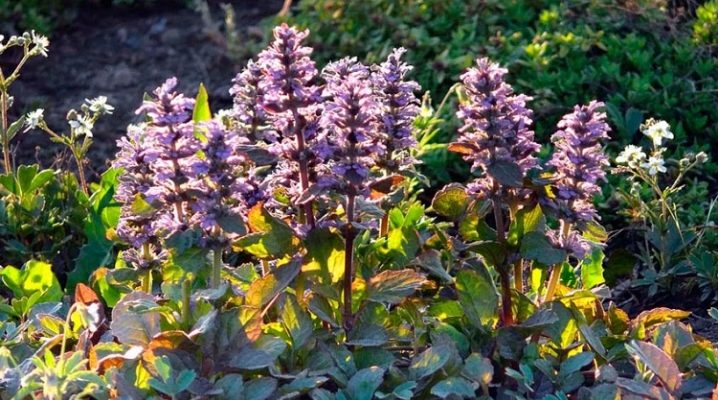
Tenacious is a plant with an interesting name that attracts many gardeners. It easily gets used to new conditions. Therefore, it can be grown in most garden plots. The article will discuss the features and varieties of the tenacious.
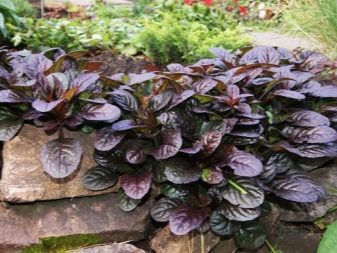

Botanical description
The second name of this flower is Ayuga. But gardeners prefer to call it exactly tenacious, highly appreciating the versatility of the plant. The flower belongs to the labiate family and is found in most temperate regions. The flower is small in size. But in forest glades and in gardens, it looks very beautiful. First of all, people are attracted by its bright flowers. The classic tenacious is decorated with blue inflorescences. But there are also plants with pink or purple flowers. The foliage of the tenacious is usually dark and rather small.
The leaves are not densely arranged and usually adjoin the roots. Most often, the foliage and stems of flowers are covered with short soft fluff. Plants can be grown both as annuals and perennials. Most often, gardeners choose the second option. Plants are planted in large numbers. Growing up, the flowers cover the ground with a solid carpet. It looks beautiful both during flowering and after it.


Popular species and varieties
There are several main varieties of these unpretentious flowers.
Creeping
This is the most common type of tenacious. It can be found both in Europe and Asia. Most often, such a flower grows next to thickets. This plant has a dark green pubescent stem and narrowed leaves. This forest tenacious blooms from May to June.
The following varieties of creeping flowers are most popular among gardeners.
- "Variegata". This is a very beautiful variety of tenacious. Small flowers have grayish green leaves with a beige border. They look like a real work of art.
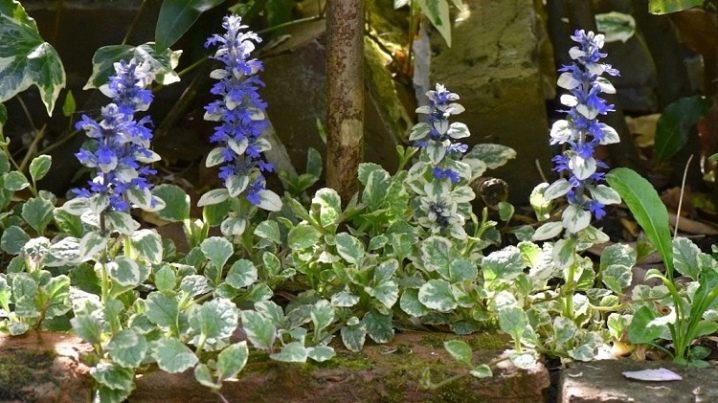
- Metallica Crisp. This variegated flower variety looks very beautiful in the flower bed and in the garden. Her flowers are double and very bright. The foliage of these plants is soft and pleasant to the touch.
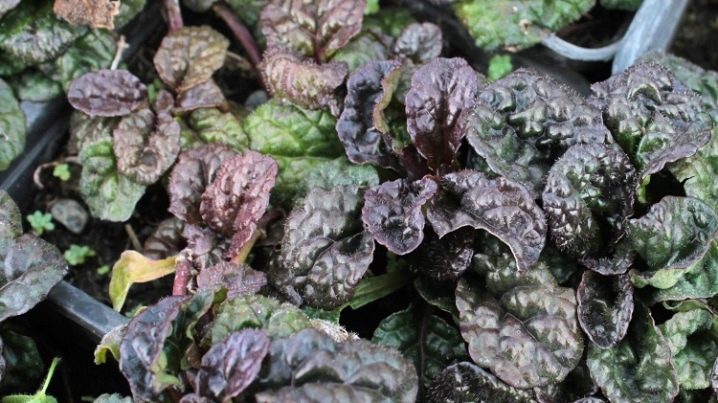
- Atropurpurea. Such flowers grow in height up to 15-20 centimeters. Their foliage is characterized by a brick shade and a slight sheen. Their inflorescences are small and dark blue.
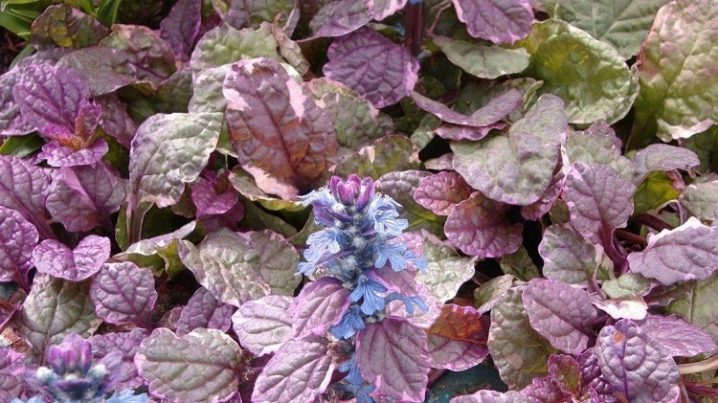
- Burgundy Glow. This variety is appreciated for the decorative foliage. It can be either light green or red or even blue. On its surface there are light streaks that resemble beautiful patterns. The buds of these flowers are pale blue. If the tenacious is grown in the shade, the petals darken over time.
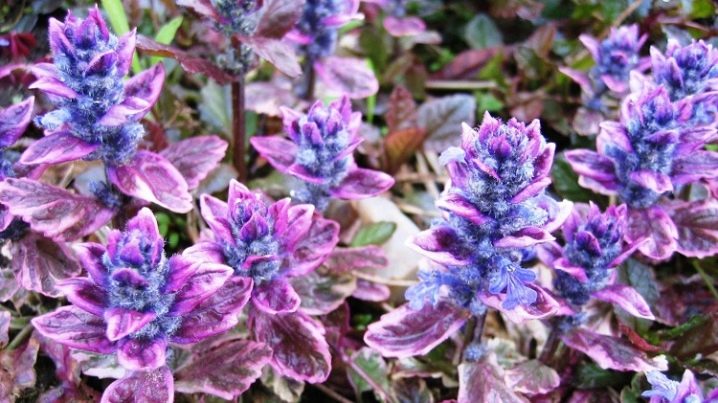
- "Multicolor". The spectacular flower features vibrant purple foliage. You can see yellow or red spots on its surface. They change their color depending on the lighting. As a rule, this type of tenacious is planted in the shade of trees.

- "Chocolate chip". A flower called "chocolate chips" is decorated with small oval foliage. The leaves are either green or purple. But the inflorescences of such plants are always dark.

- "The Pink Elf". This variety got its name because of the pleasant pink shade of the inflorescences. The plot, decorated with such flowers, looks truly fabulous. Flowers on the bushes persist for several weeks.
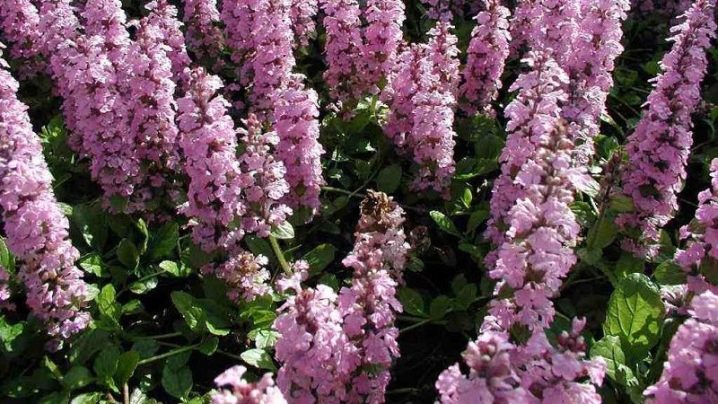
- "Polar fox". This variety of creeping tenacious is distinguished by a light color of foliage and flowers. The leaves of such plants are covered with white streaks. Their flowers are pale blue. They look elegant and beautiful.
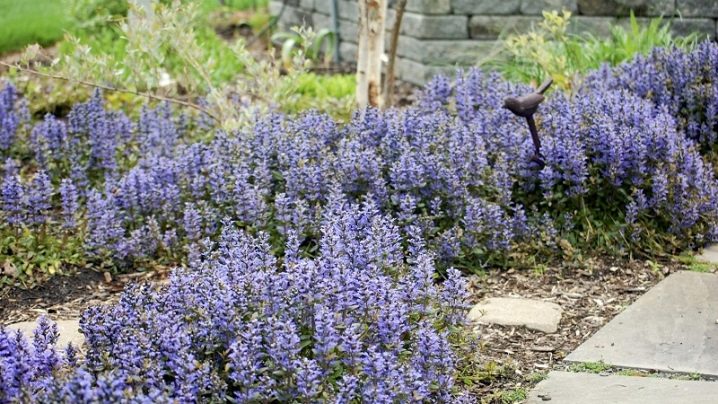
- Arctic Snow. This is another plant with a beautiful northern name. Its foliage is dark green. It is rather large and wrinkled. There is a white spot in the center of each leaf. The foliage edge is also white. The plant looks very beautiful even when it is not blooming. This variety is one of the recently bred.
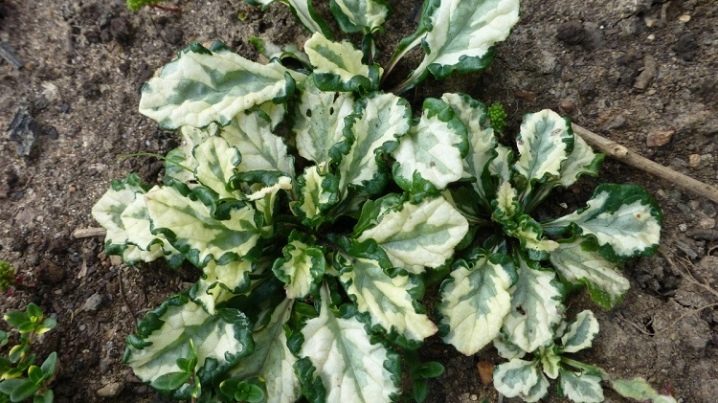
- "Mahogany". The purple foliage of this plant evokes associations with beautiful butterflies among gardeners. His flowers are bright blue. They remain on the bushes for more than a month. The plant is light-loving, but it may well grow in the shade.
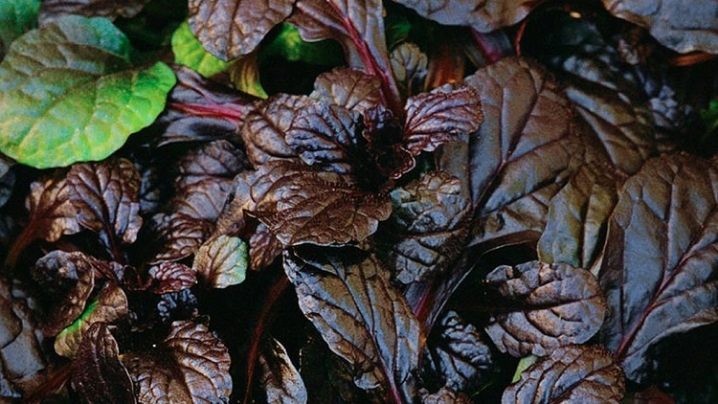
- "Spackler". Plants of this variety are decorated with dark green foliage with white stripes. His flowers are blue. They are located in the very middle of the bush, among the foliage. Such a tenacious grows well even on poor or stony soil. Flowers can be planted next to the beds, because during flowering they exude a rich aroma that attracts bees.
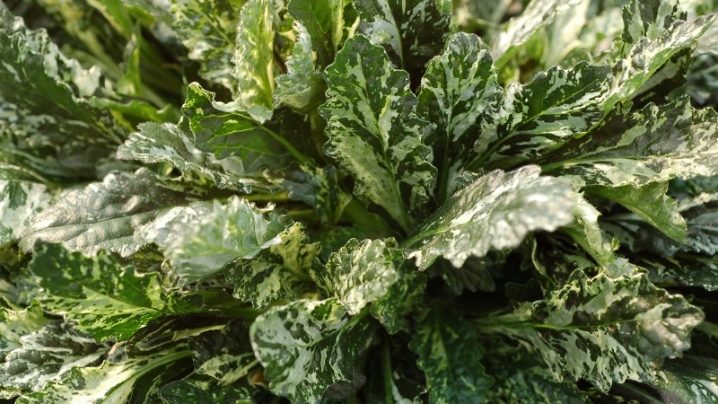
- "Rainbow". This flower got its name because of the interesting color of the foliage. It is dark green, but at the same time covered with red, white, yellow and even red spots.
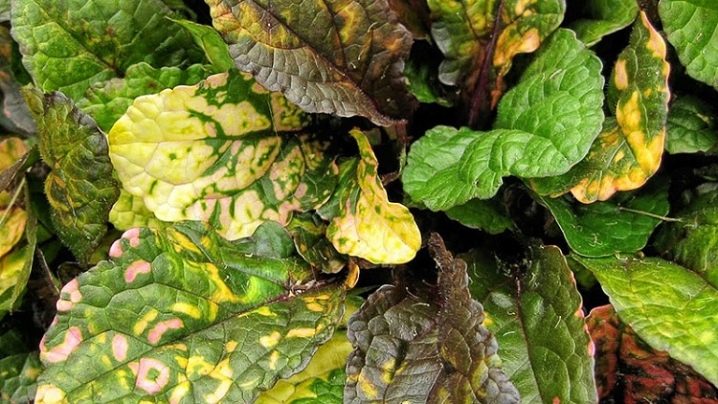
All of these flowers are widespread. Therefore, they are easy to find on sale.
Geneva
This type of flower is most commonly found in the southern regions. Flower shoots can grow up to 40 centimeters in height. The spectacular blue buds can be seen from May to June. The most common among gardeners are the following varieties of the Geneva tenacious.
- Helena. It is a tall plant with dark green foliage covered with a short downy. The flowers of such a tenacious are blue, with a yellow dusting. They can be admired from May to July.
- "Blue ocean". A flower with such a romantic name in the spring is covered with inflorescences of a rich blue hue. Its stems are also covered with fluff. Low-growing flowers literally creep along the ground. Therefore, they are most often used to create dense blue "carpets" in personal plots.
Such flowers look great in small flower beds and alpine slides.
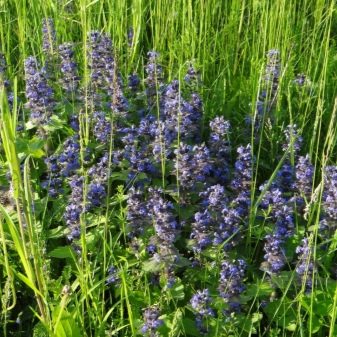
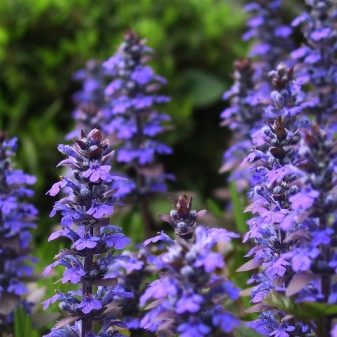
Pyramidal
This perennial is unpretentious and grows well on rocky soil. It differs from the creeping tenacious in its small size. In this flower, not only the stem is covered with fluff, but also the foliage. Its flowers can be either pink or blue, or white. The most popular type of pyramidal tenacious is called Lunar Landing. It can be recognized by its unusual yellow inflorescences.
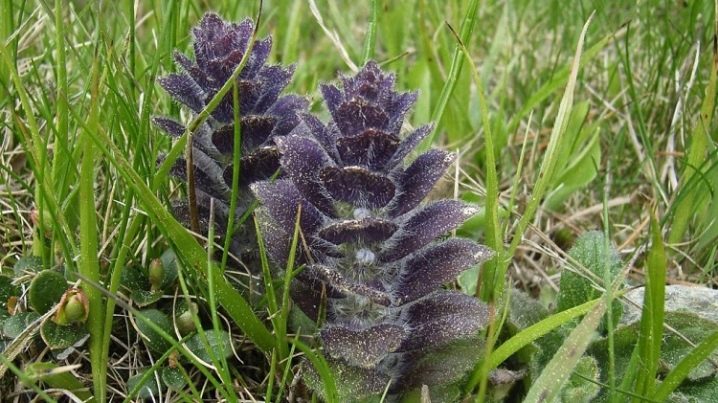
Turkestan
This flower is most commonly found in Asian countries. He's pretty tall. The plant often grows up to 60 centimeters in height. Its stem is powerful and thick, and the leaves are elongated in length. In the spring they are decorated with bright purple flowers. They remain on the stems for 3-4 months.
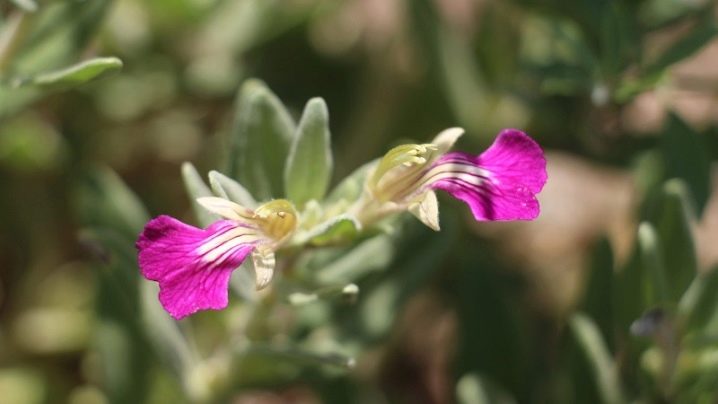
Chios
Most gardeners are amazed at the flower's endurance as well as its long bloom. The plant is very small, but very beautiful. Its flowers are bright yellow, and the foliage is dark green, with slight pubescence. Such plants look great on alpine slides and slopes.
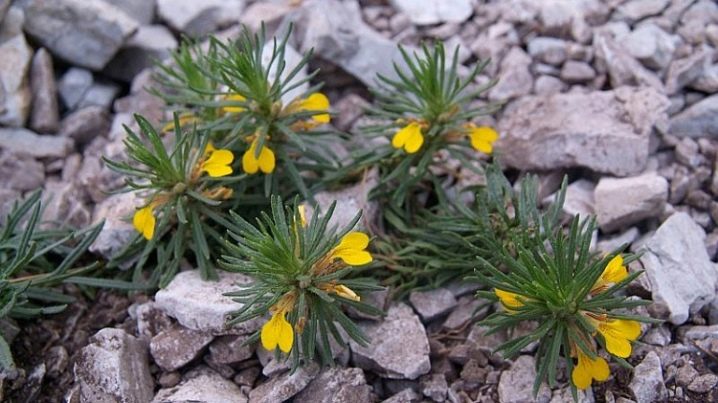
Herringbone
This flower is commonly used to create dense green carpets. They look really impressive. Mature plants have a light coniferous aroma and bluish-green foliage. That is why this type of flower got its name. The plant gets along well with any neighbors. Therefore, it can be safely planted in the country.
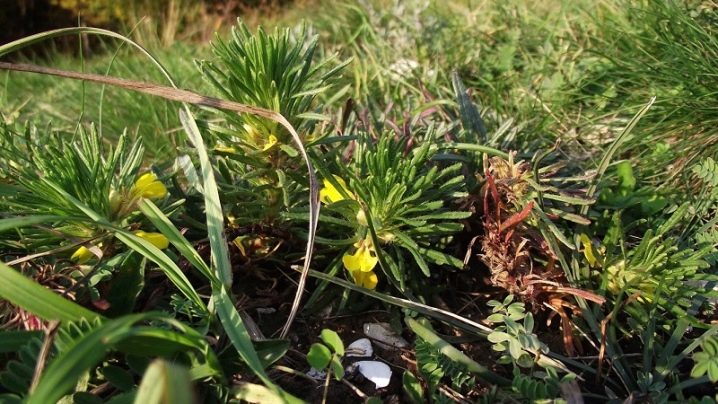
Landing
You can plant a tenacious animal in almost any part of the site. The plant will grow well both in a sunny place and in the shade. As a rule, it is planted in areas with high humidity. The acidity of the soil should not be too high. You can plant a flower in the ground with both seeds and seedlings. Planting material can be purchased at many stores. The seeds are distinguished by excellent germination. They can be planted in mid-spring or early fall. The timing of disembarkation should be selected, focusing on the characteristics of the local climate.
Seeds are sown in very small holes 1-2 centimeters deep.After that, they are sprinkled with a thin layer of fertile soil. In this case, the plant does not have to spend a lot of energy, because it germinates without any problems. After planting, the area is sprayed with warm water from a spray bottle. Seedlings are usually planted at the end of May. You can also buy it at gardening stores. But some grow plants on their own. For this, the seeds are sown in containers with a nutrient mixture at the end of winter. The soil is watered, covered with a film and left in this form until the first shoots appear. After that, the film is removed, and the containers are left in a sunny place. Seedlings grow quickly in such conditions.

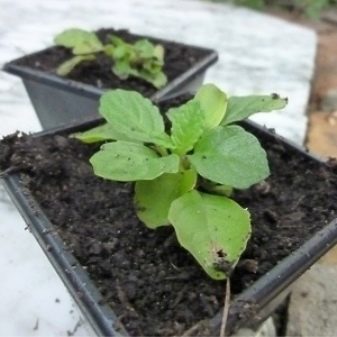
They are planted in open ground as follows.
- To begin with, prepare the soil for planting flowers. The soil is well dug up. After that, organic and mineral fertilizers are introduced into it. This can be done 1-2 days before planting flowers.
- The holes for planting young seedlings are placed at a distance of 30 centimeters.
- The flowers planted in the holes are sprinkled with a dense layer of soil. There is no need to tamp it too hard. Further, the flowers must be watered. This must be done carefully, trying not to wash off the soil from the roots.
In the first time after planting, it is important to shade young plants. Otherwise, the scorching rays of the sun can burn the foliage.

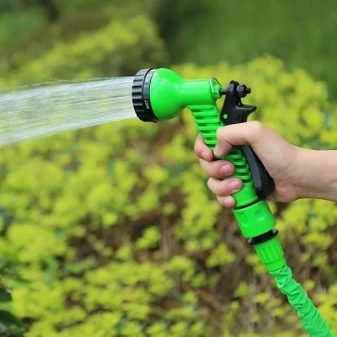
Care
Despite the unpretentiousness of this plant, the gardener still needs to learn how to properly care for such flowers.
Watering
In the first 10-15 days after planting, the tenacious must be watered. In the future, flowers growing in the open field do not need regular watering. They are usually watered only during prolonged heat. For irrigation, it is worth using warm, settled water. It must be poured carefully so that the stream of water does not erode the soil above the roots.
Water stagnation should not be allowed. This will lead to decay of roots and death of flowers.
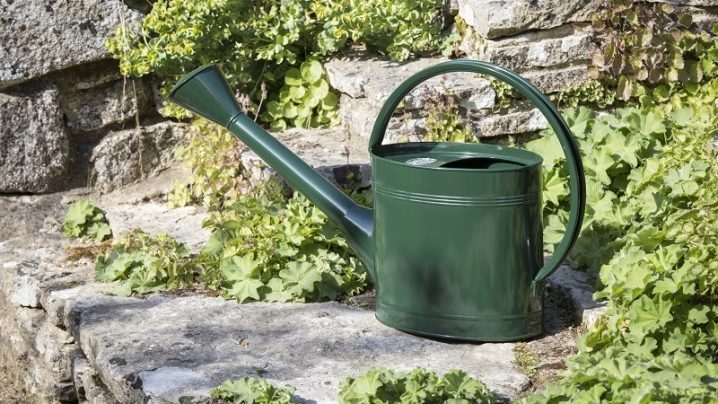
Top dressing
Gardeners usually do not feed the unpretentious tenaciousness. Plants grow well without it and delight people with their beautiful color. Fertilizers are usually applied to the soil only when flowers are planted. If the tenacious grows on the site for more than 5-6 years, a small amount can be added to the soil nitrogenous fertilizers... This will enhance the look of the floral carpet.

Pruning
So that the plants do not get sick and bloom profusely, plantings must be thinned from time to time. Plants are carefully pulled up along with the roots. This is usually done 1-2 times a year. Some gardeners will prune the buds after flowering instead. This prevents the survivor from multiplying by self-seeding. In addition, in this way, you can extend the period of its flowering.

Disease and pest control
Plants are resistant to most diseases. They get sick only if the garden is in great desolation. In this case, it is affected by fungal diseases. It is impossible to cure sick plants. Therefore, they are simply dug up and destroyed. After that, the plants are treated with a quality fungicide.
The procedure is carried out 2-3 times with a break of two weeks. During the period of the fight against the disease, the plants are not watered.
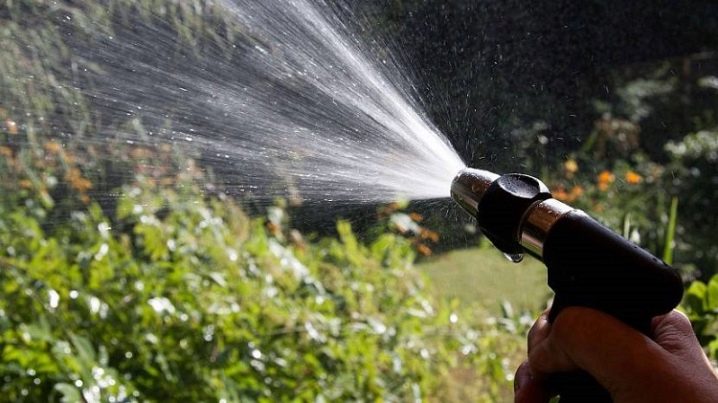
The following pests are also dangerous for the tenacious.
- Snails... They pose a great danger to flowers. Pests destroy foliage and plant stems very quickly. Plants die because of this. Gluttonous pests can be seen only after sunset. In the daytime, they are not visible at all. Therefore, collecting snails by hand is inconvenient. As a rule, the soil next to the flowers is sprinkled with wood ash. Crushed eggshells can also be used instead. These products inhibit the movement of pests. Therefore, they leave flowers alone.
- Aphid... These pests very often settle on dense green carpets. To combat them, gardeners usually use folk remedies. Most often, the tenacious is watered with ordinary soapy water. You can use detergent instead of soap to prepare this solution.In a liter of water, two tablespoons of the product are usually diluted. The resulting solution is sprayed with flowers. This product quickly corrodes the protective coating on the aphid's body, after which it dies. Chemicals are usually not used to treat infested flowers.
When dealing with aphids, you need to pay attention to the destruction of anthills. After all, it is ants that are the main distributors of aphids. They are usually poured over with boiling water. If this is not enough, a drug called "Antimuravyin". It helps to cope even with a large colony of ants.

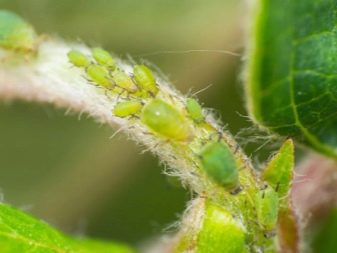
Wintering
Plants are not afraid of cold weather. Therefore, only residents of cold regions shelter them for the winter. Dry foliage and spruce branches are usually used to shelter flowers. After the first snow falls, the tenacious is additionally covered with a "white blanket".

Reproduction
The tenacious breeds very quickly. Therefore, there are no problems with its cultivation. The most commonly used methods of flower propagation are:
- By dividing the rhizome. This method is best suited for groundcover creepers. It is used if there is a need to move a flower from one place to another. Plants must be carefully dug up and separated with a shovel or sharp knife. The resulting material is laid out on wet soil, without burying the roots into the holes. Plants are only lightly sprinkled with loose earth. It is very important not to cover the tops of the flowers in the process.
- Outlets... You can propagate flowers in this way at the very beginning of spring. For planting, it is worth using parts of the plant, consisting of several outlets at once. They are planted at a short distance from each other. Using this propagation method, it is possible to fill a large flower bed with flowers very quickly.
There is no point in propagating flowers by seed. The planting material does not retain the characteristics of the mother plant.
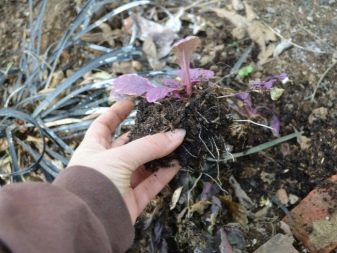
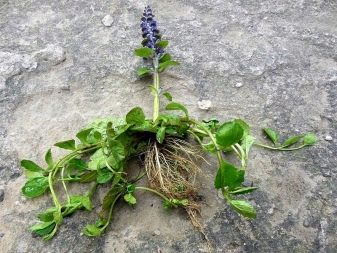
Application in landscape design
- In the landscape, the unusual flower is most often used to decorate paths and edges of flower beds. The plant can also be used to fill the empty space between other flowers. It grows quickly, so the flowerbed always looks beautiful. The tenacious goes well with flowers such as forget-me-nots, tulips and daffodils. All of these plants bloom at about the same time.
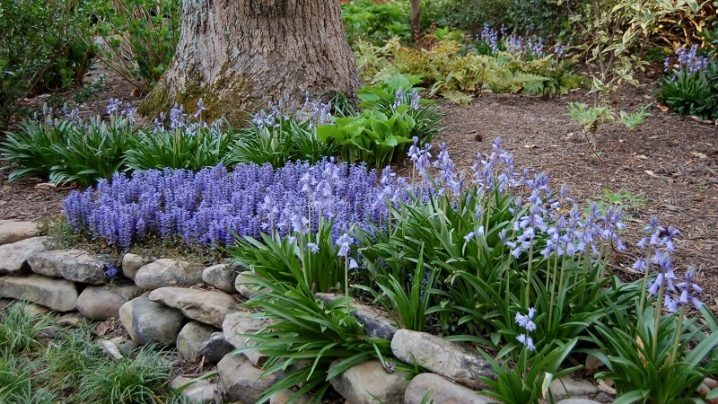
- Since the tenacious grows well in the shade, it can be planted next to trees... Small flower beds with purple, blue and pink flowers look very beautiful. Moreover, flowers do not take food from their neighbors.
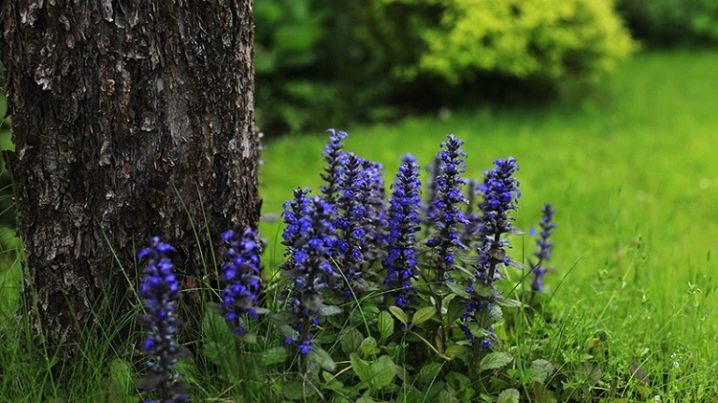
- Chios tenacious can be used to decorate cramped alpine hills. There she can coexist with spring and summer flowers. As a rule, flowers are planted at the highest point of the hill.
In general, all types of tenacious are great for beginners. They are completely non-capricious, resistant to any weather conditions. Therefore, anyone can grow them.
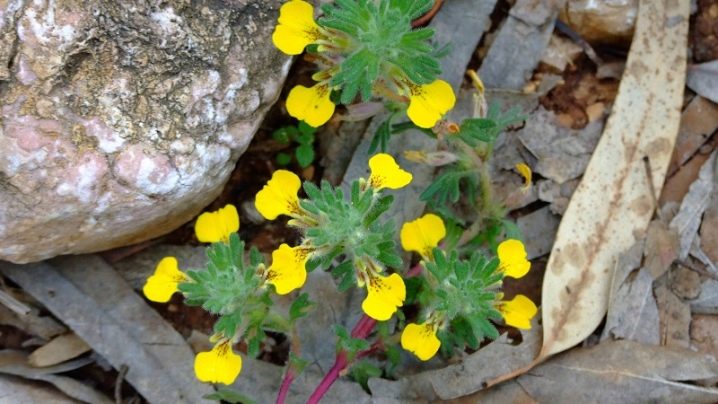







































































































The comment was sent successfully.